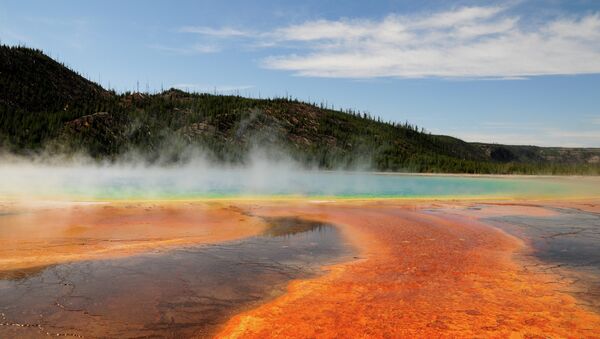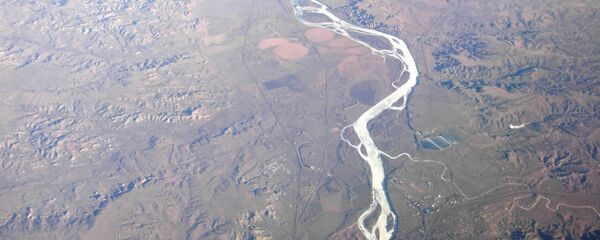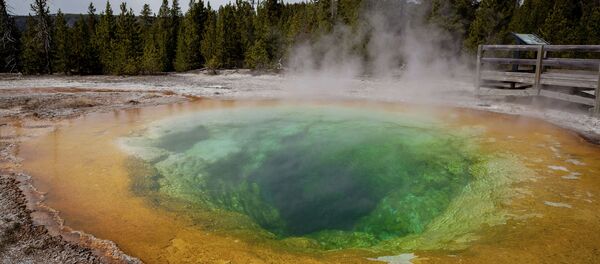The existence of a small magma chamber closer to the surface in Yellowstone was already known but, using a technique called seismic tomography, University of Utah researchers discovered at new chamber sitting underneath the old one. The newly discovered chamber holds 11,500 cubic miles and, when combined with the other, forms the largest known magma reservoir in the world.
"We can’t say definitely that this is the biggest magma reservoir in the world," said Fan-Chi Lin, one of the University of Utah researchers, "But we currently don’t know of any other that has been imaged that is as large as the two we see beneath Yellowstone."
The new discovery has been published in the journal Science and, according to the researchers, may help solve a few mysteries about the site.
For one thing, it helps explain the massive amount of carbon dioxide that is discharged daily from the huge caldera volcano at Yellowstone. Prior to the discovery, scientists had long puzzled over how a small magma reservoir could account for enough carbon dioxide to create ripples of tiny earthquakes.
"If you combine the upper and lower crustal magma reservoirs, it better accounts for the amount of carbon dioxide coming out of the ground at Yellowstone."
Geologists also puzzled over how molten material from deep underneath was able to make it to the surface. The main source of magma to Yellowstone is a mantle plume around 37 miles deep. The question geologists struggled with was how molten material could travel from the plume all the way up to the already known reservoir. As it turns out, the missing connection between the two is the newly discovered reservoir which connects the two.
Scientists also note in their research that the existence of this new reservoir does not impact the likelihood of a catastrophic volcanic eruption, as many might fear.
"The existence of the second magma chamber does not make it any more or less likely that a large volcanic eruption at Yellowstone will occur," University of Utah seismologist Jamie Farrell told Reuters. "Those findings do not change the current volcanic hazard at Yellowstone."




